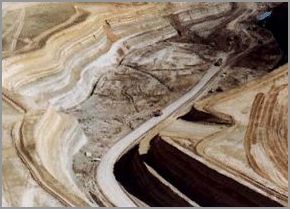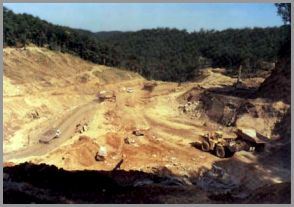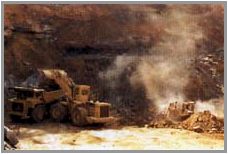| The Environmental Impacts of Mining | |
|
The environmental impacts of mining vary with the type of mineral and the kind of mine. However mining is an inherently destructive activity involving the taking of a non-renewable resource and thus some environmental damage is inevitable. Mining impacts can be sub-divided into four categories: the effects of the mine itself, the disposal of mine wastes, the transport of the mineral, and the processing of the ore which often involves or produces dangerous materials. These activities may take place at the same site, in which case the impacts are combined, or they may be separated by considerable distances. |
|

|
 |
|
|
|
|
Pollution from mining and refining Waste products from metal production processes may be released as solids, liquids, gases and as mixtures of these (e.g. fumes, slimes and slurries). The principal solid pollutants released from mining and process treatments are slag and particulate matter, and solid residues from leaching circuits (underground mines). Whilst CO2 , water vapour and sulphur gases are the most common gaseous pollutants released during the mining and refining processes. Only about 5% of the total amount of CO2 released into the atmosphere however is produced by metal smelting activities thus, stopping metal extraction activities would have negligible effect on global carbon emissions. Aqueous effluents are produced from numerous stages of metal production, ranging from the water used in milling (when rock is crushed and ground) and in the transportation of slurries to the spray cooling of exhaust gases to condense and coagulate volatile species. Large amounts of water are also used for cooling furnaces. The most heavily contaminated effluents are usually produced during the process of leaching. |
|

